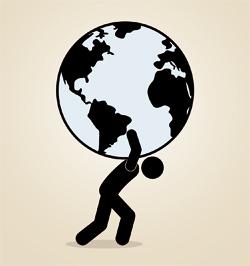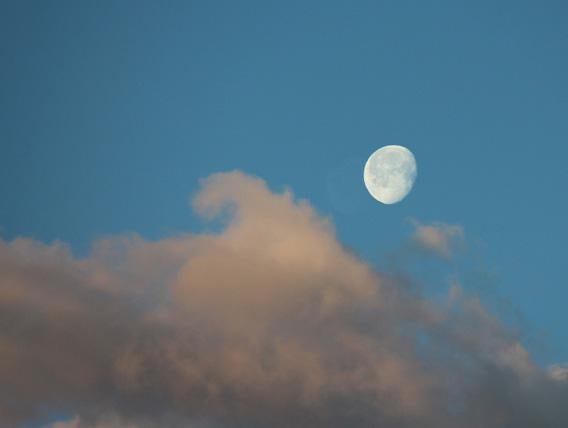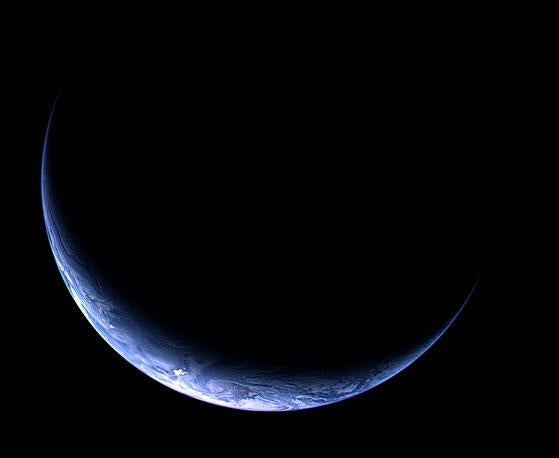Today, April 22, is Earth Day, a time to appreciate our planet and the two-way relationship we have with it. It’s easy to take Earth for granted, since we see it every day. It becomes—it is—part of life’s background.
But when you see the world through the eyes of science, nothing is mundane. We live on the surface of this great giant space-borne water-laden spinning rock, separated from the rest of the Universe beneath a thin veil of nitrogen and oxygen molecules. Even though you’re immersed in its influence, what do you really know about the Earth?
Here are some Earth Day facts about our planet for you to ponder today. All 23 hours 56 minutes and 4.091 seconds of it, that is.
1) There are a lot of different ways to measure how long it takes the Earth to go around the Sun, but if you say it takes pi x 10 million seconds, you’ll only be off by a half a percent.
2) The Earth has a volume of about one trillion cubic kilometers. Can you picture a cube 1,000 meters high, 1,000 meters deep, 1,000 meters across? Now picture a trillion of them. That’s the Earth.

Image credit: Shutterstock/iluistrator
3) The Earth has a mass of 6,000,000,000,000,000,000,000,000 kilograms, or, if you prefer, 6 sextillion tons. In pounds, that’s actually … 0. Nothing. Mass is a measure of how much stuff an object contains, but weight is how hard gravity pulls on that mass. The Earth is in space, orbiting the Sun, so it’s in free fall. It has mass, but no weight at all.
4) The Earth isn’t a perfect sphere. It spins, so it’s flattened at the poles a little bit. The diameter through the poles is 12,713.6 kilometers (7882.4 miles), but it’s 12,756.2 kilometers (7908.8 miles) through the equator. That difference of 43 kilometers is only about 0.3 percent, though, so really we’re pretty close to a perfect sphere.
5) Not only is it flattened, but the gravitational forces of the Sun and Moon (what we call tides) distort its shape even more, pulling bulges out from it. The Earth is lumpy! Out in the deep ocean, the bulge of water due to the Sun and Moon can have an amplitude (change in height from minimum to maximum) of about a meter (40 inches). The solid Earth deforms due to the tides, too, with an amplitude of roughly 50 centimeters (20 inches). Even the air is affected by tides; though there are several factors that greatly complicate it (like expansion due to heating from the Sun during the day, and, simply, weather).
6) There is no physical place where Earth’s atmosphere stops and space begins; the air just gets thinner and thinner and eventually fades away. But we love definitions, so the official height above the Earth’s surface considered to be where space begins—called the Kármán line—is at an altitude of 100 km. Anyone who gets higher than that is considered an astronaut.
7) The Moon’s radius is about one-fourth that of the Earth’s, making it the largest satellite compared to its parent planet. Charon, Pluto’s biggest moon, is about half the diameter of Pluto itself. So if you don’t consider Pluto a planet, the Earth and Moon win.

Image credit: Phil Plait
8) The Moon is farther away from Earth than you think. As an analogy, if the Earth were a basketball, the Moon would be the size of a tennis ball 7.4 meters (24 feet) away.
9) The Earth’s atmosphere is only transparent to a narrow slice of the electromagnetic spectrum. What we call visible light (mostly!) gets through, but most flavors of infrared, ultraviolet, X-rays and gamma-rays are stopped cold. Those last few are dangerous to life as we know it, so that works out well. But it’s not a coincidence: if our air didn’t protect us, we’d have evolved differently!
10) The Earth is warming up. It’s a fact. Deal with it.

Image credit: NASA
11) Fewer than 200 impact craters have been cataloged on Earth. The Moon has billions. We’d have just as many, but our air and water erode them over time, erasing them. Old craters on the Earth are hundreds of millions of years old; on the Moon those would be considered young.
12) An asteroid, 2010 TK7, shares an orbit with the Earth. It’s about 300 meters (1,000 feet) across, and never gets close enough to us to be a danger.
13) The Earth orbits the Sun on an ellipse. The shape changes slightly over time due to the influence of the other planets, but on average the closest we get to the Sun (perihelion) is about 147.1 million kilometers (91.3 million miles) and the farthest (aphelion) about 152.1 million kilometers (94.3 million miles). That difference is only about 3 percent, which by eye is very nearly a perfect circle.

Image credit: Jack Cook/WHOI/USGS
14) If you took all the water on Earth and collected it into a single drop, it would be just less than 1,400 kilometers (860 miles) across.
15) The Earth’s atmosphere weighs 5 quintillion kilograms, or 5,000 trillion tons! You can do this math yourself: Weight is equal to pressure times area. Atmospheric pressure on the Earth’s surface is about 1 kilogram per square centimeter. Multiply that by the number of square centimeters on the Earth’s surface and you get the weight of all that air. Hint: The area of a sphere is 4 x π x radius2. [Note: Yes, I know kilograms are a mass and not a weight. Read this before you rant in the comments, please.]
And a bonus, because it’s important:
16) The Earth is the only place in the entire Universe where we know that life exists. But that won’t be true forever.
To us, our Earth seems huge, solid, tailor-made for us, and permanent. But that is just one perspective, born of living on its surface. From a different perspective, none of those things is true. Seen from space, it looks much less unbreakable. Seen from deep space, it shrinks to nothing more than a dot, barely visible in the reflected light of the Sun. From another star, even seeing our planet at all would be a colossal task. We are, after a monumental effort spanning decades, only just now finding other planets orbiting other stars.
Are any like Earth? Almost certainly, and in fact there may be billions of planets like ours orbiting alien stars. But while they are like ours, they aren’t ours. As with any individual, our world is unique, and precious, and wonderful. Let’s keep it that way.

Image credit: NASA/JPL
If you liked these facts, I spent a year writing daily astronomy and space factoids which I’ve collected in my BAFacts Archive.
